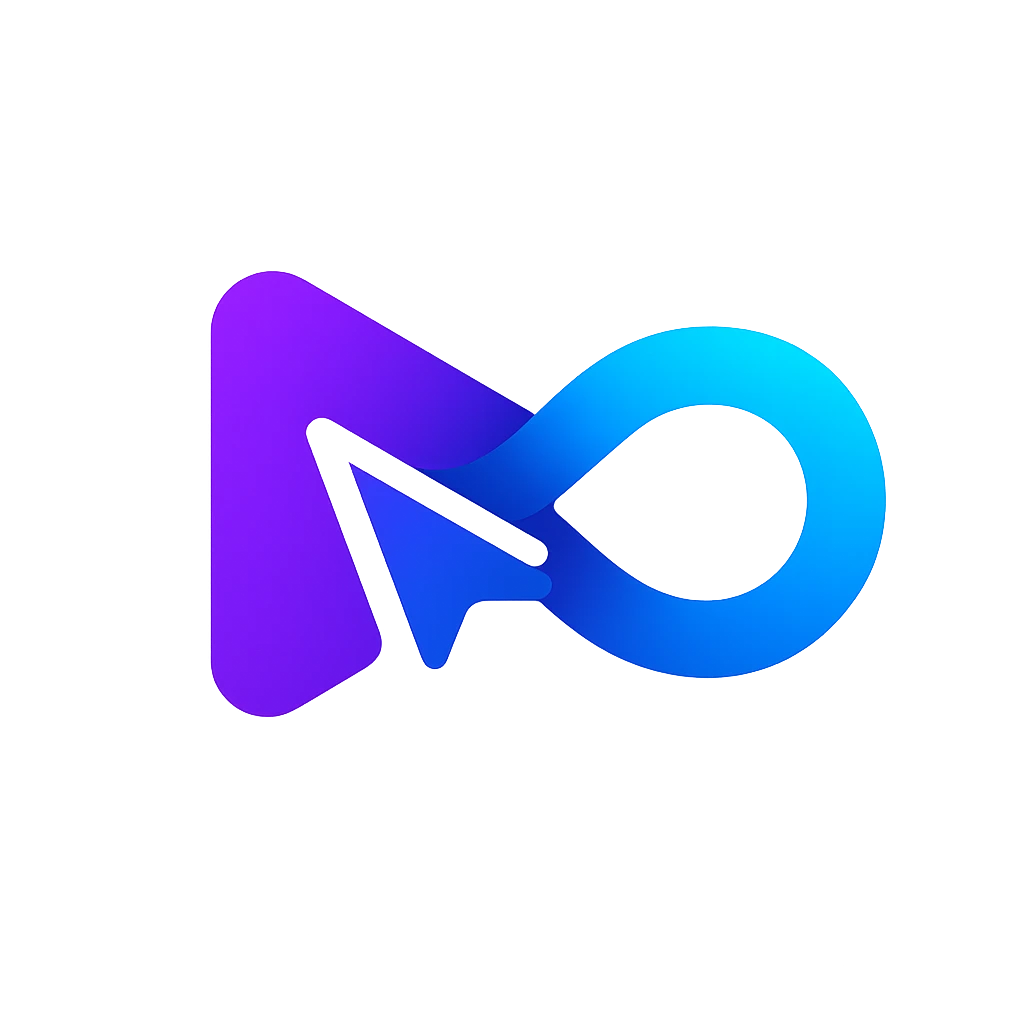AI Music Api

Whatever Happened to WarpsoundAI? The Silence of a Once-Vocal AI Music Innovator
Ever wonder what became of WarpsoundAI—the flashy AI-powered music brand that promised to revolutionize the music metaverse with virtual artists, generative beats, and NFT collectibles?
If you’ve found yourself asking that question, you’re not alone. Once a headliner in AI music circles and backed by major players like Warner Music Group, Warpsound (also stylized as Warpsound.AI) lit up the scene with virtual artists like Nayomi and Gnar Heart. They were even featured in festivals and partnered with Web3 leaders. But by 2024, something strange began to happen.
Their once-thriving X (formerly Twitter) accounts went silent. Their community engagement tapered off. Quietly, Warpsound.AI faded from center stage.
So—what was it? Why did it disappear? And is it actually gone for good?
Let’s dive in.
What Was WarpsoundAI?
WarpsoundAI was the flagship initiative of Authentic Artists, a San Francisco-based AI tech startup specializing in generative music and virtual performance tech. It launched publicly in 2021 with a bold vision: to create AI-powered virtual artists who make original music in real time, remixable in the metaverse, interactive in games, and collectible as NFTs.
Key highlights included:
- Founding Entity: Authentic Artists
- Products: Generative AI music engine, virtual DJs (like Nayomi, DJ Dragoon), and an NFT avatar collection called WVRPS by Warpsound
- Funding & Partners: Strategic backing from Warner Music Group, The Sandbox, and partnerships with Yuga Labs (parent company of Bored Ape Yacht Club)
- Audience: Web3 enthusiasts, NFT collectors, forward-thinkers in virtual entertainment and AI music composition
At its peak, it wasn't just a tech demo—it was entertaining. Live performances at Tribeca Festival, dynamic music NFTs, and a vision of music shaped by audiences in real time made Warpsound feel futuristic and fresh.
Why Did WarpsoundAI Fail?
Short Answer:
Despite an innovative concept and big-name backing, WarpsoundAI failed to find sustainable traction in a rapidly shifting tech and media landscape, especially as interest in NFTs and Web3 cooled.
Long Answer: A Mix of Market Tides, Monetization Challenges, and Branding Drift
Let's break down the core issues that led to WarpsoundAI's disappearance:
Missed Market Timing and Product Fit
While the idea of virtual DJs blasting AI-generated music in the metaverse sounded amazing in 2021, actual demand didn’t match the hype. Outside of NFT circles and early adopters, few people saw concrete use cases for collecting music NFTs or listening to synthetic artists.Monetization Never Hit the Right Note
Warpsound’s primary revenue stream centered around its WVRPS NFT collection and potential licensing of its AI-generated music. But when the crypto market tumbled in late 2022 and into 2023, NFT enthusiasm plunged. Monetizing music NFTs became nearly impossible, at least at scale.Stiff Competition in AI Music and Web3
Companies like Mubert, Endlesss, and cutting-edge models like Google’s MusicLM offered powerful tools for AI music creation—without requiring users to buy into crypto ecosystems or virtual personas. Warpsound’s dependency on Web3 tech became a burden rather than an edge.Low Visibility and Brand Inconsistency
After 2022, Warpsound’s digital presence waned. Their former tentpole accounts (like @warpsound_ai and @wvrps) on platforms like X ceased all activity. Even though the website remained up as late as early 2025, the lack of announcements or project updates created the perception of a dormant or abandoned project.Niche Appeal and Over-Reliance on Hype Cycles
Warpsound was built for an audience niche—Web3 musicians, NFT fans, and AI art enthusiasts. But the general public never joined in. As investor attention shifted toward broader AI innovation (like ChatGPT, Sora, or Midjourney) in 2023 and 2024, the excitement around AI music NFTs felt passé.Quiet Fade, Not a Loud Shutdown
What’s interesting is that Warpsound didn’t go out with a bang. There were no dramatic shutdown announcements or fire sales. Their tech remained live for a while, there were subtle API updates, and WVRPS NFTs were technically still tradeable. But without active curation, events, or direction, Warpsound ultimately faded into digital limbo.
A Tale of Two Models: Warpsound vs. Mubert
To better understand Warpsound’s downfall, it helps to compare it to a competitor that’s still going strong.
Mubert, an AI music platform born around the same era, focused purely on creating royalty-free, streamable AI music for creators, apps, and commercial use. The crucial differences?
- Utility over Spectacle: Mubert emphasized utility for everyday creators rather than bold metaverse dreams.
- Wide User Base: Mubert appealed to YouTubers, TikTokers, developers, and brands who just wanted high-quality background music.
- Simpler Monetization: Mubert offered APIs and subscription models, bypassing the patchy economics of NFTs.
- Less Reliance on Crypto: While Warpsound tied its fortunes to Web3 platforms like The Sandbox and OpenSea, Mubert stayed fully in the Web2 and SaaS (software-as-a-service) ecosystem—more stable and familiar to investors and users alike.
Bottom line: Warpsound had style, but Mubert had staying power.
Final Thoughts: The Beat That Slipped Away
Even the best concepts in emerging tech—AI music, the metaverse, virtual artists—can fail if they don’t evolve with the audience. Warpsound wasn’t wrong in its vision; it arguably came too fast, too flashy, and too tied to hype-driven markets like NFTs.
Had it pivoted sooner toward utility (as Mubert did) or broadened its appeal beyond Web3, we might still be seeing Nayomi DJ livestreams and WVRPS evolved into dynamic music avatars beyond collectibles.
Instead, Warpsound joins a growing list of promising startups that mistimed consumer readiness and hit pause—maybe permanently—on their innovative beat.
FAQs about WarpsoundAI
Who founded WarpsoundAI?
WarpsoundAI was created by Authentic Artists, a San Francisco-based AI music startup founded by Chris McGarry.
When did WarpsoundAI launch?
The platform publicly launched in 2021, with initial NFT launches and virtual artist debuts in 2022.
When did WarpsoundAI shut down?
There was no official shutdown announcement, but signs of inactivity (like social media silence and lack of product updates) suggest the company became dormant sometime in late 2023 or early 2024.
How much funding did WarpsoundAI raise?
Authentic Artists raised an undisclosed strategic funding round in 2022, backed by Warner Music Group, The Sandbox, and other Web3 investors.
Why did WarpsoundAI fail?
Mainly due to a shrinking NFT market, unclear monetization routes, limited mainstream appeal, and increasing competition in AI music tools.
Is the website still active?
As of early 2025, the main website remained technically online, but with minimal updates or evidence of active development.
TL;DR: WarpsoundAI had all the makings of a futuristic music juggernaut—AI beats, metaverse avatars, celebrity collabs—but in the end, unsustainable market reliance and failure to adapt left it silent in a space that's now controlled by more pragmatic, utility-focused players.
What is warpsound.ai?
WarpSound is an AI music platform designed to operate within a virtual metaverse, utilizing advanced generative AI techniques to compose and curate music. Developed in partnership with Grammy-winning artists, this platform employs a unique training dataset to produce original music on the fly. It facilitates interactive music encounters and provides content for various applications including streaming and gaming.
What kind of music can I create with warpsound.ai?
With WarpSound, users have the flexibility to craft an extensive range of music styles and genres through its generative AI capabilities. Here are some potential avenues:
- Ambient Soundscapes: WarpSound is adept at crafting tranquil ambient music suitable for relaxation, meditation, or as background accompaniment in videos.
- Electronic Beats: For enthusiasts of electronic music, WarpSound excels in generating intricate beats, synths, and melodies, catering to genres like techno, house, or trance.
- Classical Compositions: WarpSound's AI prowess extends to composing classical pieces, complete with orchestral arrangements, piano solos, and string sections.
- Experimental Sounds: Users can push creative boundaries by utilizing WarpSound to produce experimental, avant-garde music that challenges traditional structures.
- Game Soundtracks: Game developers can harness WarpSound to dynamically generate soundtracks tailored to their games, adapting seamlessly to various contexts such as epic battles or serene exploration.
- Customizable Parameters: WarpSound offers users the ability to adjust parameters such as tempo, mood, and instrumentation, providing a collaborative experience akin to working with an AI collaborator.
It's worth noting that WarpSound transcends predefined genres, encouraging users to explore new sonic territories and embrace experimentation, allowing the AI to pleasantly surprise them.
Can I integrate warpsound.ai into my own music production software?
Although WarpSound lacks direct integration with existing music production software, users can still seamlessly integrate its generative music capabilities into their workflow. Here's how:
Export MIDI Files:
- Generate a musical composition using WarpSound.
- Export the resulting MIDI file from WarpSound.
- Import this MIDI file into your preferred digital audio workstation (DAW) or music software.Sample-Based Integration:
- Extract individual instrument samples from WarpSound-generated compositions.
- Load these samples into your sampler instrument (e.g., Kontakt, EXS24, or Ableton Sampler).
- Create custom patches or instruments using these samples in your DAW.Real-Time Playback via Virtual MIDI:
- Set up a virtual MIDI port (e.g., LoopBe or IAC Driver) on your computer.
- Configure WarpSound to output MIDI data to this virtual port.
- Route this MIDI data to your DAW or any other software instrument for real-time playback.Custom Scripts or Plugins:
- For users proficient in coding, create custom scripts or plugins that interact with WarpSound's API.
- These scripts can automate the process of generating music and integrate it directly into your DAW.
It's important to note that WarpSound excels in creating original music in real time. By leveraging methods such as exporting MIDI files or samples, users can seamlessly incorporate AI-generated content into their existing projects. Happy music-making!
How much does warpsound.ai cost?
WarpSound is presently accessible for free, enabling users to explore its innovative AI music capabilities at no cost. While the platform continues to evolve and potentially introduce additional features, specific pricing plans and details may be introduced in the future. For the time being, users can enjoy exploring and creating music with WarpSound without any charges. If you're intrigued, you can visit their website to learn more about this cutting-edge generative AI music platform.
What are the benefits of warpsound.ai?
Here are some benefits of using WarpSound.ai:
Creativity Amplification: WarpSound's generative AI technology serves as a catalyst for creativity by generating original music compositions. It liberates users from traditional constraints, sparking fresh ideas and inspiration.
Instant Soundtracks: Whether for videos, games, or podcasts, WarpSound offers instant, royalty-free music tailored to fit various content needs seamlessly.
Unique Musical Experiences: WarpSound caters to musicians, content creators, and music enthusiasts alike, providing unique interactive experiences. Users can partake in virtual concerts, collaborate with AI artists, and explore innovative sonic landscapes.
No Copyright Worries: With WarpSound generating original compositions, users need not worry about copyright issues. The music can be freely used without any restrictions.
Real-Time Adaptation: WarpSound dynamically responds to user input, making it well-suited for live events, gaming, or interactive installations. It adjusts in real time, ensuring a smooth musical journey.
Community and Collaboration: WarpSound fosters a vibrant community comprising artists, developers, and music aficionados. Through collaboration, sharing, and exploration, users can collectively engage within the WarpSound metaverse.
It's important to recognize that WarpSound transcends being merely a tool—it embodies an evolving ecosystem that celebrates the fusion of AI and music, offering boundless possibilities for creative expression.
















.webp)













